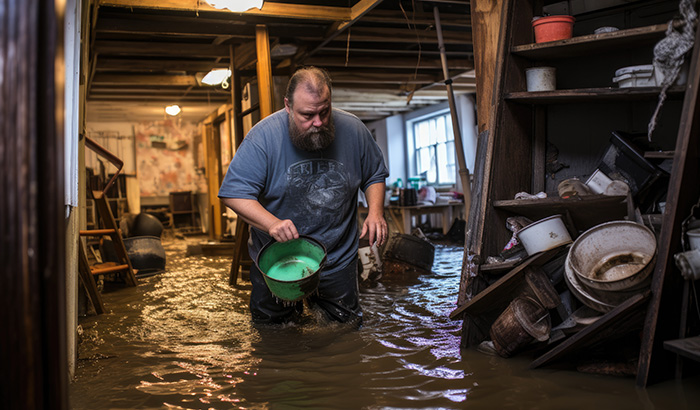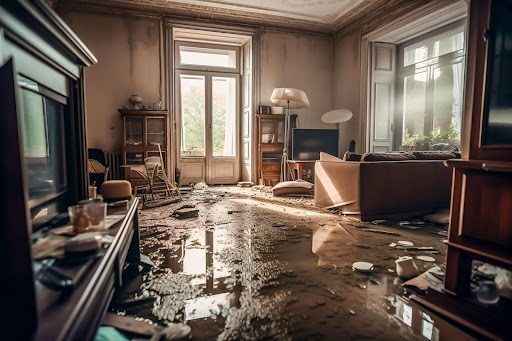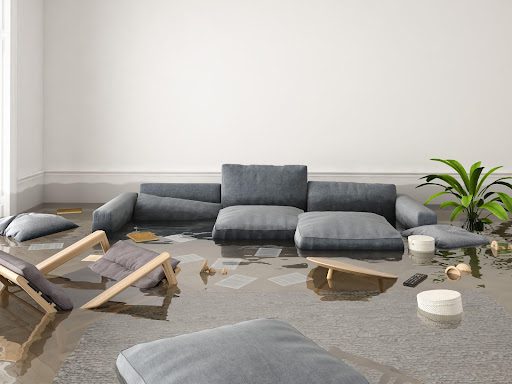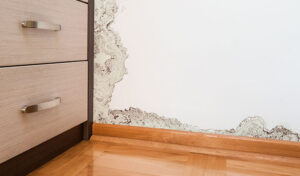Understanding the intricacies of flood damage and the importance of flood restoration services will make a world of difference. Whether you’re a homeowner, a renter, or a property manager, keep in mind that time is of the essence, and being prepared can turn potential calamities into manageable challenges.
Understanding Flood Damage
One of the first steps towards navigating the aftermath of a flood is understanding the nature of water damage itself. Not all water damage is created equal, and being able to distinguish between the different categories can guide the restoration process.
Categories of Water Damage
Clean Water
This is water that does not immediately pose a threat to your health. It typically originates from sources like a broken water line, a leaking faucet, or an overflowing sink. Though deemed ‘clean,’ if left untreated, it can evolve into the more concerning categories below.
Grey Water
Grey water can come from appliance malfunctions, toilet overflows with urine (but no feces), or sump pump failures. Grey water might contain some contaminants that can cause discomfort or illness. It’s essential to address this water type promptly, ensuring that areas and items affected are thoroughly cleaned and disinfected.
Black Water
The most hazardous of the three categories, black water, is typically a result of sewage backups, flooding from natural water sources, or standing water that has begun to support microbial growth. This water contains significant pathogens and can lead to severe health risks.
Extreme caution is advised when dealing with black water, and it’s highly recommended to let professionals handle its cleanup and restoration.
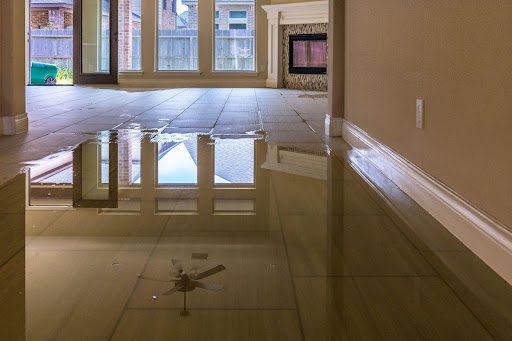
Effects of Prolonged Exposure to Water
As harmless as it seems in our daily lives, water can become a formidable adversary when it overstays its welcome in our properties. Many things happen if the aftermath of flooding isn’t addressed promptly.
Mold Growth
Moist environments are a breeding ground for mold spores. If areas remain damp, mold can begin to grow within just 24 to 48 hours. Besides being unsightly and causing property damage, some molds can pose health risks, leading to respiratory issues and allergic reactions.
Structural Damage
Extended exposure to water can weaken building materials, from the rotting of wooden structures to the breakdown of drywall. Over time, this can compromise the property’s integrity, posing safety risks.
Health Risks
Apart from mold, stagnant water can become a breeding ground for bacteria, viruses, and parasites. Especially in the case of black water, the potential for disease is considerable. Direct contact or even just being in a damp environment can lead to various health issues.
Immediate Response: The First 24 Hours
The initial hours following a flood are crucial, a pivotal period that can greatly influence the trajectory of recovery. Taking immediate and effective action substantially curtails the extent of damage and paves the way for a smoother restoration process.
Here are the key steps to undertake during this critical window:
Emergency Contact: Reaching Out to Restoration Services
As soon as you identify flood damage, contacting a professional restoration service is imperative. These experts are trained to handle emergencies, often operating round the clock, ensuring that help is just a call away. With their expertise, they can quickly stabilize the situation, providing guidance and immediate relief measures.
Damage Assessment: Understanding the Extent and Category of Damage
The first task for professionals is to assess the degree of damage. This step involves inspecting the property, identifying the source of the flooding, determining the type of water involved, and gauging the extent of penetration. This assessment not only helps in formulating an effective restoration plan but also assists in documenting the damage for insurance purposes.
Water Extraction: Removing Standing Water Using Specialized Equipment
Using powerful pumps and industrial vacuums, these teams work diligently to extract water from your property. Efficient extraction not only prevents further damage but also sets the stage for the subsequent drying and dehumidification processes.
Drying and Dehumidification
After confronting a flood, the subsequent essential action is addressing residual moisture in your property. Effective drying and dehumidification safeguard your assets and create a healthy space.
Preventing Mold and Mildew
Leftover moisture can invite mold and mildew, even when not immediately visible. These not only harm your property’s structure and look but also pose health threats. Thorough drying goes beyond just visible water—it’s about eliminating conditions favorable for mold growth.
Utilizing Advanced Equipment
Today’s restoration techniques employ cutting-edge tools for efficient drying. Air movers circulate air, aiding in quicker evaporation, while dehumidifiers pull moisture from the environment. For hard-to-reach spots, special equipment ensures comprehensive drying.
Continuous Moisture Monitoring
Drying requires diligent oversight. Professionals use tools like moisture meters and hygrometers to consistently check moisture levels, ensuring thorough drying and assuring homeowners of a safe, dry space.
Cleaning and Sanitizing
Post-flood cleaning and sanitization ensure the space is presentable and free from health hazards, prioritizing the safety and comfort of its occupants.
Addressing Health Concerns
Floodwaters, especially from natural events or sewage, introduce various contaminants, including harmful microorganisms. It’s crucial to neutralize these threats with thorough cleaning and sanitization, ensuring a safe environment.
Tailored Cleaning Techniques
Depending on the water type (clean, grey, or black), cleaning methods differ. Professionals employ EPA-approved agents specific to the damage type for both effectiveness and safety.
Specialized Treatments for Soft Materials
Items like upholstery and carpets, susceptible to water damage, often require specialized cleaning. Techniques like hot water extraction, ultrasonic cleaning, and immersion treatments are used, aiming not just to clean but to restore items where possible.
Mold Remediation
Mold is a significant concern. Remediation isn’t just about removal—it involves identification, containment, thorough eradication, and preventive measures to ensure mold doesn’t return.
Restoration and Repair
After a flood, property owners are often confronted with visible damages, showcasing water’s potent impact. Yet, the journey ahead is about rejuvenation and restoration, both in structure and essence.
Addressing Structural Concerns
The foundation and structure of a property are paramount. Extended water exposure can weaken key elements like wooden beams or erode foundational aspects. Specialists evaluate and systematically repair or replace these damaged sections, prioritizing safety and stability.
Material Replacement
Water affects materials differently. Some, like laminated flooring, might be beyond repair after damage, while others, like soaked insulation, lose effectiveness. Expert teams pinpoint and replace these materials, focusing not only on appearance but also on the property’s functionality and durability.
Cosmetic Enhancements
With structural and material concerns addressed, the next step is aesthetic revitalization. Fresh paint, refinished wooden surfaces, and polished tiles are just a few final touches that restore the property’s charm and warmth.
Dealing with Insurance
Navigating insurance claims post-flood can seem overwhelming, but with the right guidance, the process becomes more manageable.
Here’s a brief guide to simplify the insurance aspect of flood restoration:
Documentation is Key
After flood damage, capturing photos, videos, and detailed records of the affected areas aids in claim substantiation. This diligent documentation, including timelines and costs, presents a clear picture to insurers and ensures every damage aspect is accounted for.
Engage Actively with Insurance Adjusters
Adjusters play a pivotal role in determining claim amounts. Being present during their visits and sharing insights about damages and planned repairs can foster a smoother process, promoting clarity and potentially hastening approvals.
Leverage Expertise in Restoration Services
Many flood restoration professionals have hands-on experience with the insurance claim process. They can provide in-depth assessments, estimates, and necessary paperwork. This expertise streamlines claims, and in many scenarios, their advocacy can lead to prompt and favorable outcomes.
Choosing the Right Flood Restoration Service
Choosing the right flood restoration service is crucial, akin to selecting a reliable ally during challenging times. With many options out there, it’s essential to make an informed choice.
Key Factors
- Experience: Opt for companies with a solid track record, as they’re likely equipped with expertise from handling diverse flood situations.
- Certification: Seek services accredited by recognized bodies, like the IICRC, to ensure adherence to industry standards.
- Equipment: Prioritize those using advanced equipment for a promising restoration outcome.
- Reviews: Check platforms like the Better Business Bureau and Google Reviews for genuine feedback on a company’s reputation and service quality.
Essential Questions to Ask
- How seasoned are you in flood restoration?
- Can you share references or past project details?
- Do you hold the necessary insurance and licenses?
- How is your team trained and updated?
- What’s your emergency response time?
Advantages of Comprehensive Services
Choose services offering a complete restoration solution. This holistic approach means homeowners collaborate with a single expert entity, ensuring consistent quality and streamlined communication for efficient restoration.
Total Flood & Fire Restoration
Navigating the aftermath of a flood can be daunting for any property owner. Amid such challenges, the expertise and readiness of a reliable restoration service become invaluable. Total Flood & Fire Restoration emerges as that dependable ally in your restoration journey.
With a team of licensed and certified professionals, we offer a comprehensive suite of services — from tackling damage from fires, storms, and water to addressing concerns like mold, sewage, and biohazards. Recognizing that calamities don’t wait for business hours, we are available 24/7 to help.
Serving both Utah and Salt Lake Counties, we’re the go-to for both homes and businesses in need of restoration. When the unexpected happens, call 385-503-2846 and rest assured that Total Flood & Fire Restoration will set things right.

